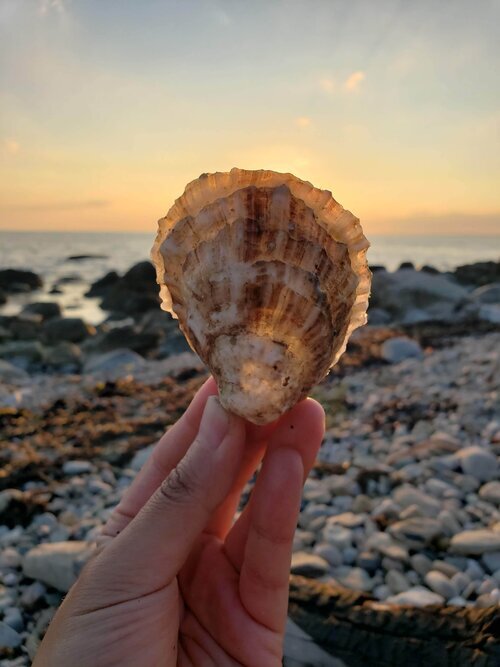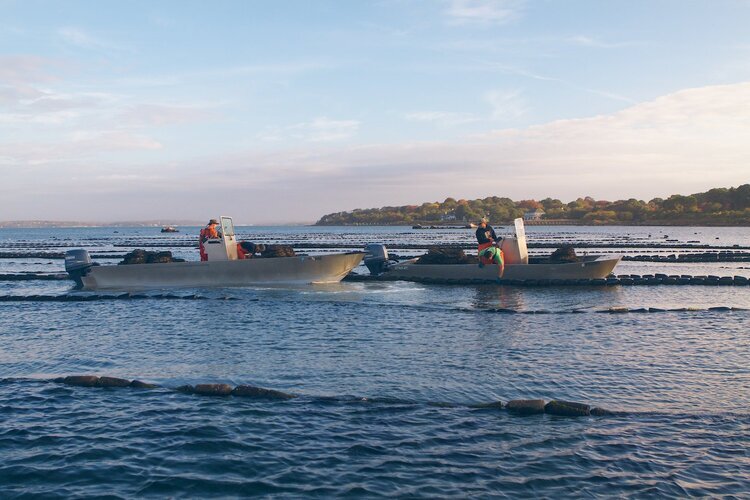This story was written by Julie Qiu of In a Half Shell.
There has never been a more exciting time to be an oyster lover. We are spoiled with choice and showered with novelty. We can even learn a thing or two about the grower behind each variety through Instagram. But this was not always the case.
Only a handful of oyster appellations were served at New York City's top restaurants merely two decades ago. "There were Blue Points, Wellfleets, Apalachicolas, Malpeques… and that was about it," Steve Malinowski from Fishers Island Oyster Farm recollects as we talked about what it was like when they debuted Fishers Island Petites in the late '80s.
In 1987, "there weren't very many oyster-centric oyster bars like what we have today in New York City," said Steve. Besides Grand Central Oyster Bar and neighboring Docks Oyster Bar in Midtown Manhattan, white tablecloth restaurants were the only establishments that served raw oysters. Chefs only considered a few oyster names to be of consequence, and for New Yorkers, Blue Point was the gold standard.
So how did the Malinowskis convince New York chefs to give their Fishers Island-grown oysters a chance? It took a delicious oyster, a great story, a lot of hustle, and some luck. A new class of ambitious young chefs with innovative ideas and interest in farm-to-table dining entered the NYC restaurant scene when Fishers Island Petites debuted. It was to be a fortunate and game-changing opportunity for all parties involved.
Unlike the big, burly Blue Point, the Fishers Island Petite was comparatively modest in size. It possessed a perfect teardrop shape, a nice cup to hold the oyster in its liquor, and was exceptionally clean tasting. It looked and tasted completely different from all other oysters that were available. Beyond the striking visual and taste differences, which new chefs gravitated to, the Fishers Island oyster also came with a unique and compelling backstory. "None of the chefs knew what oyster farming was all about," Steve said, "so when I would go into the city to sell my oysters, I also brought a set of black and white photographs with me. I showed them our family, where we were farming, and how it's done."
One of the chefs who immediately noticed Fishers Island Petites was none other than Jean George Vongerichten. "He was one of the first chefs who understood what we were trying to do and purchased almost everything that we produced in the first year." Not only did Chef Vongerichten embrace the oyster, but he also innovated with it. Steve recounts a memorable dish that served his oyster dressed with a frozen granita created with the oyster liquor.
American seafood chef and sustainability advocate, Rick Moonen also developed a special affinity with the brand. “Nobody was offering a petite oyster at the time, so I was already intrigued. But once I had the chance to visit the island, understand the origin, and build a friendship with Steve, my confidence in Fishers Island oysters really solidified.”
Photo taken by Julie Qiu for Fishers Island Oyster Farm.
Soon after, more chefs began to feature Fishers Island Petites on their tasting menus. From André Soltner to Charlie Palmer, Michael Lomonaco to Anne Rosenzweig, the hottest chefs of the '90s were all singing its praises. Even the incomparable Julia Childs recalled enjoying Fishers Island Oysters at Plaza Oyster Bar when Steve ran into her at the International Restaurant and Foodservice Show at the Javitz Center.
The popularization of Fishers Island Petites in New York City’s restaurants bode well for the Malinowski family's dream of making a living through restorative oyster farming, and it also created a new market for boutique, small-batch, artisanally crafted oysters in New England. The next time when you encounter a chef or shucker who wants you to try a great new oyster that they just brought in, you’ll know who to thank in part for that opportunity.




